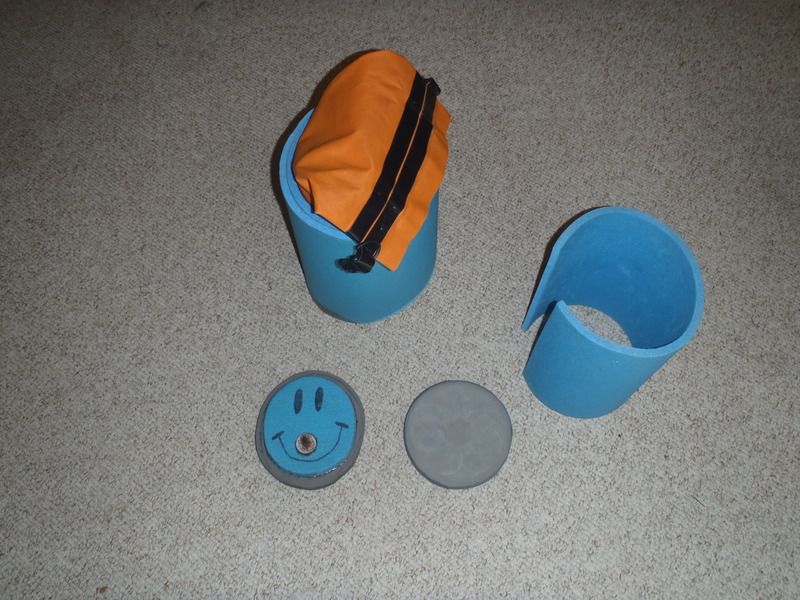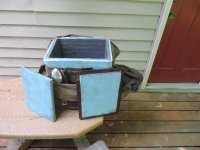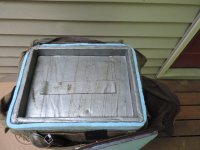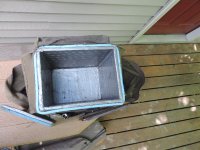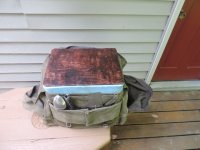G
Guest
Guest
Wait, that’s not a cooler, it’s a day pack. That disguise is a good thing, especially if you launch from State Parks or other places that prohibit alcohol.
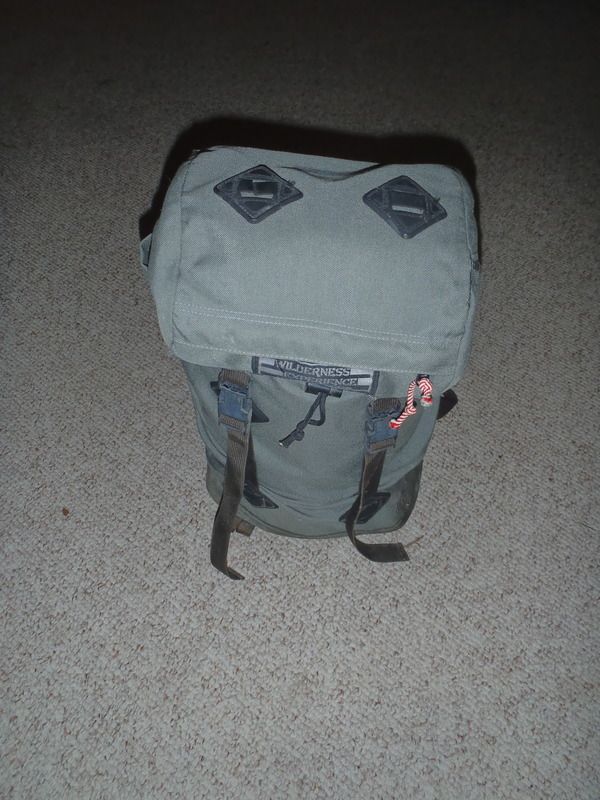
Inside the daypack is a Sealline 20L dry bag

Hmmm, not just a dry bag, but a dry bag insulated with a 360 wrap of cheap blue sleeping pad foam.
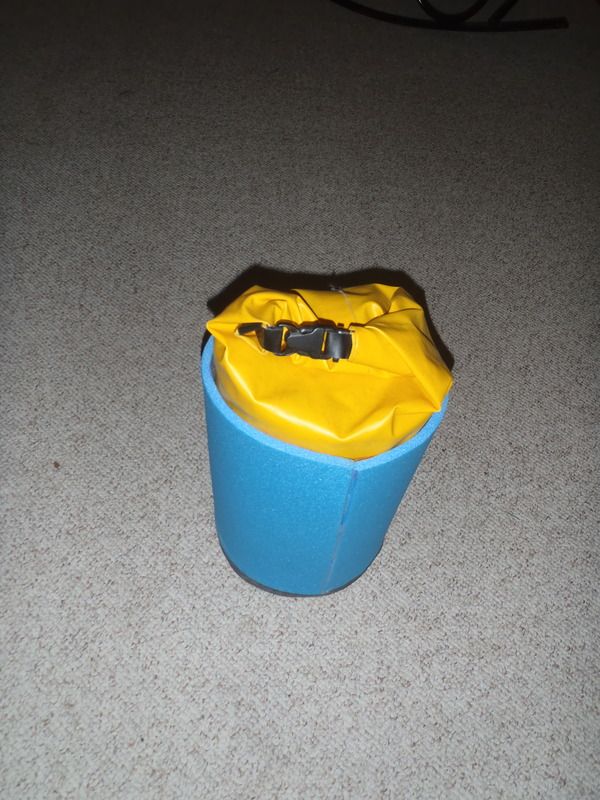
Two foam circles of exercise flooring (the smaller circle is inset) on the bottom, where the cooler might rest on the warm ground.
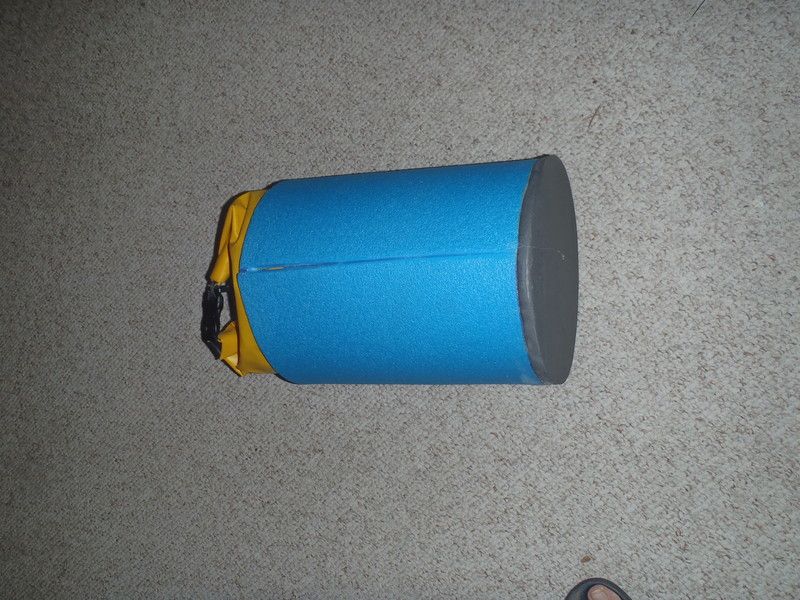
So what’s this inside the dry bag? A curious insulating lid, with a handy little pull loop.
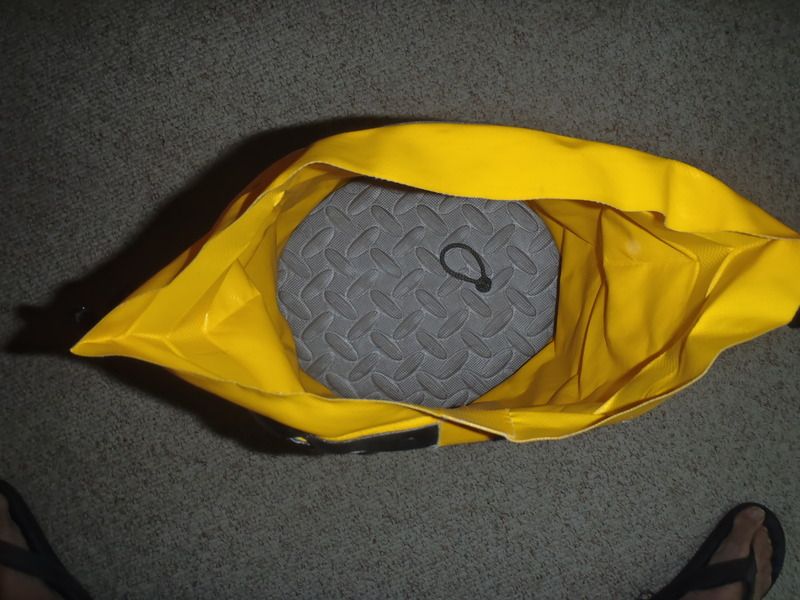
Let’s give that loop a pull. Whoda thunk it, it’s another blue foam stovepipe layer, with a couple more circles of exercise pad bottom. If you are counting, that’s four layers of foam on the bottom and two wrapped around the sides.

dang well insulated, more so if you consider the layers of waterproof dry bag rolled down tight with little air space and the day pack exoskeleton. The foam on the outside of the dry bag is contact cement permanent. All of the inside piece are removable for easy cleaning.
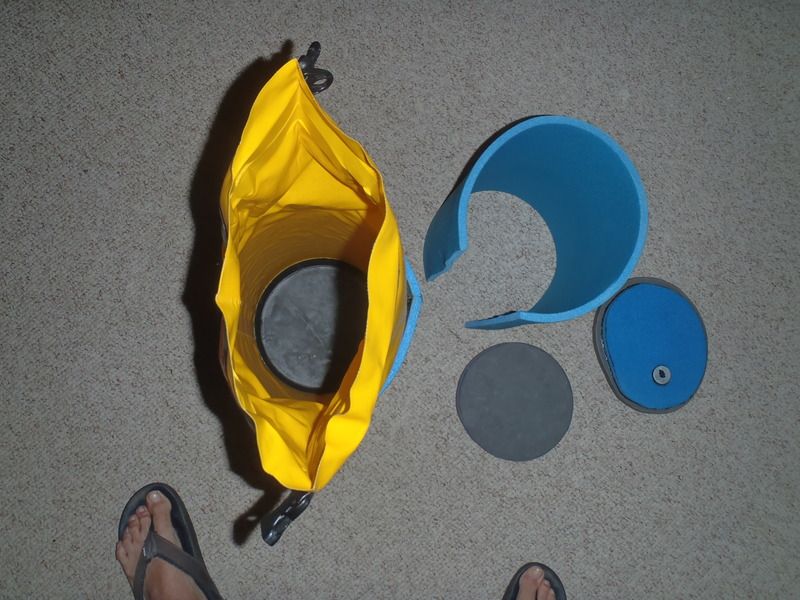
Holds 21 cans, three stacks of seven. More if I remove the inner foam stovepipe. Well insulated and well sealed.
Carry handle straps are the bane of cheap soft side coolers. 20 lbs of beer and ice is a load for a small satchel. That unobtrusively disguised cooler tote has excellent carry straps. Plus lash tabs and an external pocket. It floats high even when fully loaded. And I have a nice daypack to use if I remove the cooler insert and stash it in the camp shade.
That DIY remains my favorite cooler for many reasons.
Fifth best reason:
Yup, looks like a daypack to me.
Fourth best reason:
Stupid quick and easy to make.
Third best reason:
It was cheap.
Old day pack, free. Thanks Doug.
Shop scrap sleeping pad and exercise flooring remains, free
Baja 20 bag, twenty-ish bucks at the time, but I didn’t buy one, we had spares. Including a spare Baja 10 bag that now makes a great daytrip cooler in an even less obtrusive daypack.
Second best reason:
It’s essentially bombproof. There is not much to fail, and it would be hard to damage it with anything less than a hydraulic press blowout.
Best best reason, it’ll keep the original beers cold for a week.

Inside the daypack is a Sealline 20L dry bag

Hmmm, not just a dry bag, but a dry bag insulated with a 360 wrap of cheap blue sleeping pad foam.

Two foam circles of exercise flooring (the smaller circle is inset) on the bottom, where the cooler might rest on the warm ground.

So what’s this inside the dry bag? A curious insulating lid, with a handy little pull loop.

Let’s give that loop a pull. Whoda thunk it, it’s another blue foam stovepipe layer, with a couple more circles of exercise pad bottom. If you are counting, that’s four layers of foam on the bottom and two wrapped around the sides.

dang well insulated, more so if you consider the layers of waterproof dry bag rolled down tight with little air space and the day pack exoskeleton. The foam on the outside of the dry bag is contact cement permanent. All of the inside piece are removable for easy cleaning.

Holds 21 cans, three stacks of seven. More if I remove the inner foam stovepipe. Well insulated and well sealed.
Carry handle straps are the bane of cheap soft side coolers. 20 lbs of beer and ice is a load for a small satchel. That unobtrusively disguised cooler tote has excellent carry straps. Plus lash tabs and an external pocket. It floats high even when fully loaded. And I have a nice daypack to use if I remove the cooler insert and stash it in the camp shade.
That DIY remains my favorite cooler for many reasons.
Fifth best reason:
Yup, looks like a daypack to me.
Fourth best reason:
Stupid quick and easy to make.
Third best reason:
It was cheap.
Old day pack, free. Thanks Doug.
Shop scrap sleeping pad and exercise flooring remains, free
Baja 20 bag, twenty-ish bucks at the time, but I didn’t buy one, we had spares. Including a spare Baja 10 bag that now makes a great daytrip cooler in an even less obtrusive daypack.
Second best reason:
It’s essentially bombproof. There is not much to fail, and it would be hard to damage it with anything less than a hydraulic press blowout.
Best best reason, it’ll keep the original beers cold for a week.
Last edited:

